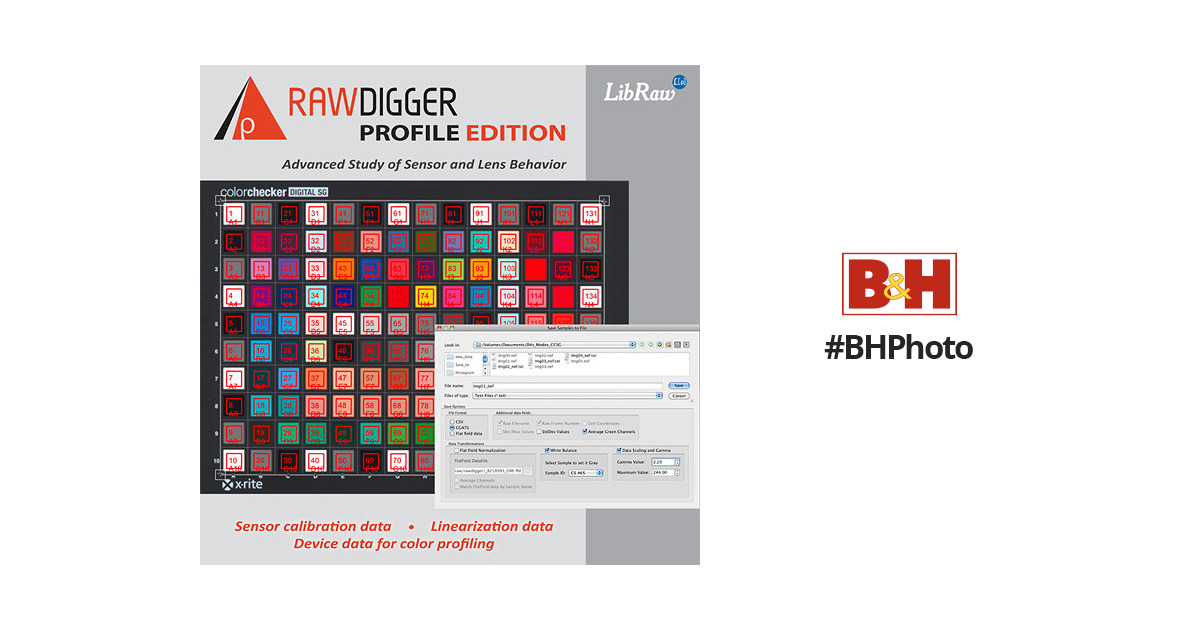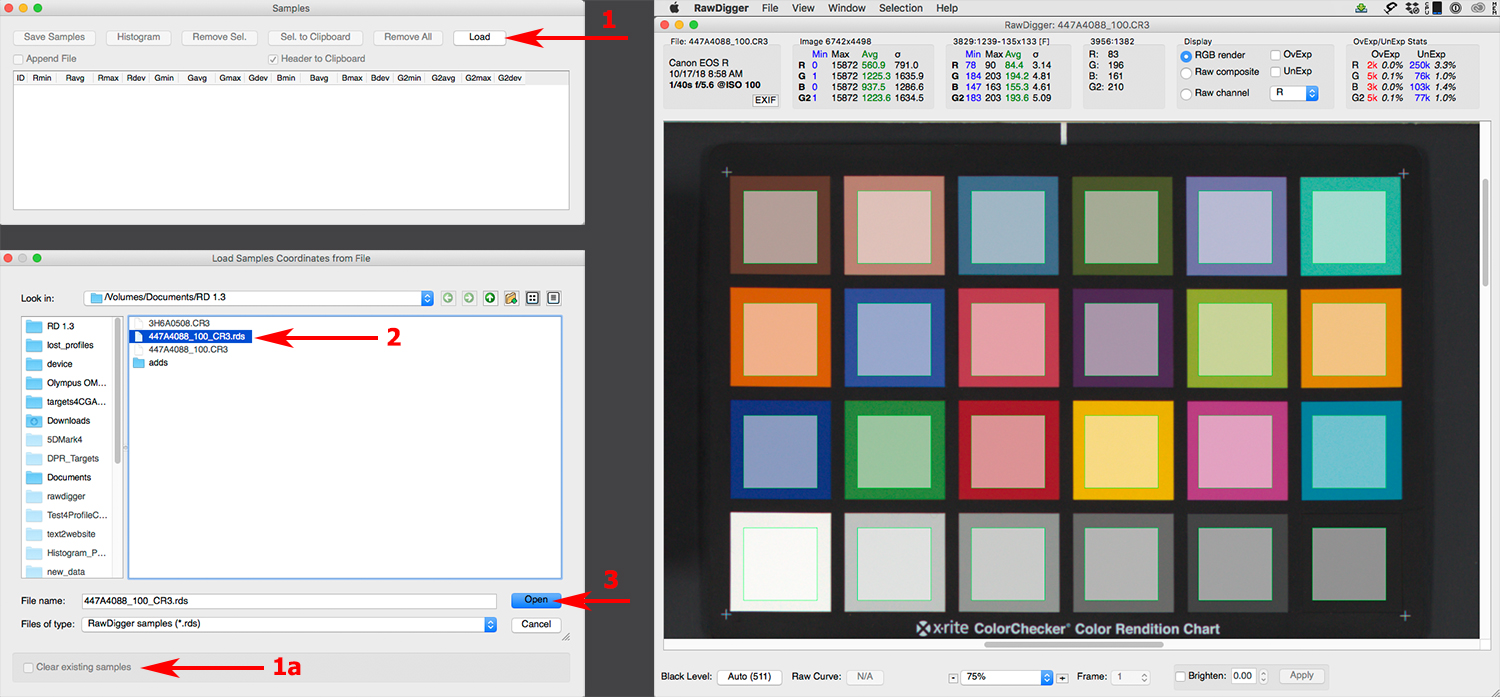

#Professional rawdigger Patch
What we learn from the above is that as soon as the patch "A" is slightly (around 1/6 EV) below clipping, the patch "M" is about 2.5 stops below clipping. For the "M" patch, the absolute value of 0.75D translates into: 0.75D*log 2(10) ≈ 2.49 EV Thus, 0.1D ≈ 1/3 EV (this means that the step between the patches on Q13 is very close to 1/3 EV), and the absolute density of 0.05D for the patch "A" is ≈ 1/6 EV. Hence, using formula (1), we will infer that the correlation between the density and EV units is: EV = D * log 210 ≈ D * 3.322 Given that for linear data: EV = log 2(1/Rf)
#Professional rawdigger how to
To connect the dots, let's also see how to convert density D to familiar photographic stops, that is to EV units.
#Professional rawdigger iso
That is fortunate, as ISO Standard 12232 "Digital still cameras - Determination of exposure index, ISO speed ratings, standard output sensitivity, and recommended exposure index" defines the midpoint on a rendered image as 18% grey. Q13 is designed in such a way that the reflectance of the "M" patch in percentage (clipping point is considered to be 100% reflectance) is very close to the proverbial 18% mid-tone: 100% / (10^0.75) = 17.78% More details can be found in ISO 5-4:2009, but the above is sufficient for the task at hand. Where Rf is Reflectance factor (say, 0.18 for 18%) According to the formulation, the "M" patch receives the density of 0.75D (0.05 + 7*0.1D).įollowing “ A Guide to Understanding Graphic Arts Densitometry " by X-Rite, p.5: D = log 10(1/Rf ), that is Rf = 1 /10^D, Q13 was sharing the first place among the most photographed objects in the world with Macbeth ColorChecker.įrom the Kodak formulation, the absolute reflection density D r (we will shorten it to just "density" - D) of "A" patch is 0.05D, the step between patches is 0.1D. It was designed to "find the correct exposure and processing conditions" and suits here very well. The famous Kodak Q13 grey step wedge has known and stable values. Now we need something better than just a visual reference, as we are going to deal with numbers and we need a shot of a target with known values. Calculating the Brightening Caused by The Default Adjustments If you are not into formulas and calculations you can scroll down to the next part, devoted to the practical advice on how to deal with those default adjustments. It seems as if ACR (Figure 1) applies some default adjustments to a raw shot upon opening it.īelow we will calculate the exact value of the adjustment, applied by default to the midtone. So if you were to try and expose your shots to look good and properly exposed in a raw converter "as is", by default, you would need to underexpose this shot even more, close to 2 EV total. When opening this shot in ACR or Adobe Lr (and in some other converters, too) it does look overexposed and flat on the higher tones (see the upper left part of the banana, it starts to lose volume, to look flat, glossy, nearly featureless while persimmon is obviously too bright) Comparing RAW Rendered "As Is" to its Default Render in a Converter

That, however, is a subject for another day.įirst, let's see how this brightening happens in raw conversion. Of course, brightness also depends on the monitor calibration and viewing conditions, as well as the ISO setting in the camera, much the same way the volume control sets the loudness. Brightness is the product of the raw conversion process and as such depends on the settings in the raw converter, including the default settings, which may not be so obvious. While reading, please keep in mind that one can't judge the exposure by the brightness. Having customized defaults, however, will save you a lot of time down the road. Instead, change the default settings in your raw converter (read on for a suggestion) or adjust on a per image basis. Not a great idea, especially if the light is low and you are already above ISO 400.Īs a result of lowering the exposure you will push shadows higher on the tone scale while doing raw conversion, thus transposing shadow noise and artifacts (such as banding and blotches) to lighter tones where they are more visible consequently you will reduce resolution in those areas, as more noise and less levels in raw mean less details. Please don't lower the exposure, you will be underexposing by more than 1 stop additionally to the underexposure due to camera meter calibration. If I shoot RAW+JPEG, JPEG looks OK, while RAW is not. "What happens to my mid-tones? I set exposure using exposure meter open the shot in Adobe Lr (or Adobe Camera Raw, or some other converter) - the shot looks overexposed and everything starting from mid-tone and up looks very flat.


 0 kommentar(er)
0 kommentar(er)
